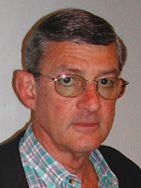The tribology-energy connection
Dr. Robert M. Gresham, Contributing Editor | TLT Lubrication Fundamentals April 2017
The U.S. Dept. of Energy issues a new report to answer the question, ‘Can Tribology Save a Quad?’

A new report from the U.S. Dept. of Energy examines how energy can be saved in such areas as transportation, power generation and manufacturing.
© Can Stock Photo / CreativeNature
IN PAST ISSUES OF TLT we’ve discussed STLE’s efforts in support of the mission by the U.S. Department of Energy’s Advanced Research Projects Agency-Energy (ARPA-E) to “overcome long-term and high-risk technological barriers in the development of energy technologies that ensure America’s energy security and technological lead.”
STLE hosted a workshop titled Tribological Opportunities May 19-20, 2016, following our 71st Annual Meeting & Exhibition in Las Vegas. The purpose of the workshop was to explore opportunities in advanced tribological science and engineering for energy technologies across a wide range of practical application sectors. Attendees met during the two-day period to discuss industry needs and where new tribological science and engineering principles might assist in helping to accelerate technological advances in how surfaces and lubricants interact during relative motion for energy savings. The workshop was augmented by an online survey and now a new report titled, Can Tribology Save a Quad? which was distributed to the broader tribology community and in consultation with STLE and other professional societies.
The report states that a total of 22-plus quads of energy (out of approximately 100 quads usage in the U.S.) could be saved annually through various technologies enabled by targeted research support in tribology. More broadly, recommendations were made to expand the topic of tribology to a national call to action that will take an entirely new approach to reducing energy use and improving energy management or generation systems. The report also identifies energy-efficiency stretch goals to challenge the tribology research community at large companies and the extended industrial network. The long-term goal includes finding solutions and measuring and characterizing tools and new technologies to change how we deploy advanced energy technologies across all energy sectors.
Topics covered in the report are:
•
Opportunities in the Transportation Sector
•
Opportunities in the Power Generation Sector
•
Opportunities in the Industrial and Manufacturing Sector
•
Other Opportunities: Nanotechnology, Materials, Novel Approaches
•
Market and Policy Considerations in Applying Tribology to Energy Technologies
•
Workforce Development Needs
•
General Conclusions.
I found that the last similar report, A Review of Tribological Sinks in Six Major Industries, published by DOE’s Energy Conservation and Utilization Technologies Program (ECUT) in 1985, provided enormous insights for research managers and business-development managers in guiding the direction for growth of their companies. These reports help provide a sound basis for making proposals to upper management for added personnel and training, R&D direction and funding, sales and marketing development and capital investment.
The focus of the 1985 report was how to reduce wasted energy. It looked at six major energy sinks. Examples of the kind of conclusions and their results include:
•
In the industrial sector we learned that wear losses are double the losses due to friction—it takes energy to cause wear or overcome friction. Thus, we almost literally created the field of material science, at least with regard to reducing wear rates.
•
In the metalworking sector, frictional losses are nearly three times that of wear.
•
In the transportation sector, we learned that the totality of the upper cylinder region was the major culprit in losses in wear, friction and heat. Thus, we funded research in how to measure the various processes having to do with combustion, surface interactions and lubricant interactions as a combined system. While this work continues, many advances already have been incorporated into modern engines, and the current study indicates many more will be needed.
With these examples, I hope you can see how such reports can have a major impact on our future research and development.
I hope this new study will have the same impact on the future of our quality of life. I heartily recommend you read through the report and make it available to key people in your company. The report also provides guidance for academic researchers in obtaining funding for research. Finally, the report provided justification for federal funding of various related projects. I am certain the updated report will make similar contributions to our industry.
The government was scheduled to release the report around the time of this writing. We can't predict when the report will be issued, but as soon as it is STLE will post it at
www.stle.org.
 Bob Gresham is STLE’s director of professional development. You can reach him at rgresham@stle.org
Bob Gresham is STLE’s director of professional development. You can reach him at rgresham@stle.org.